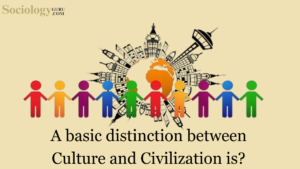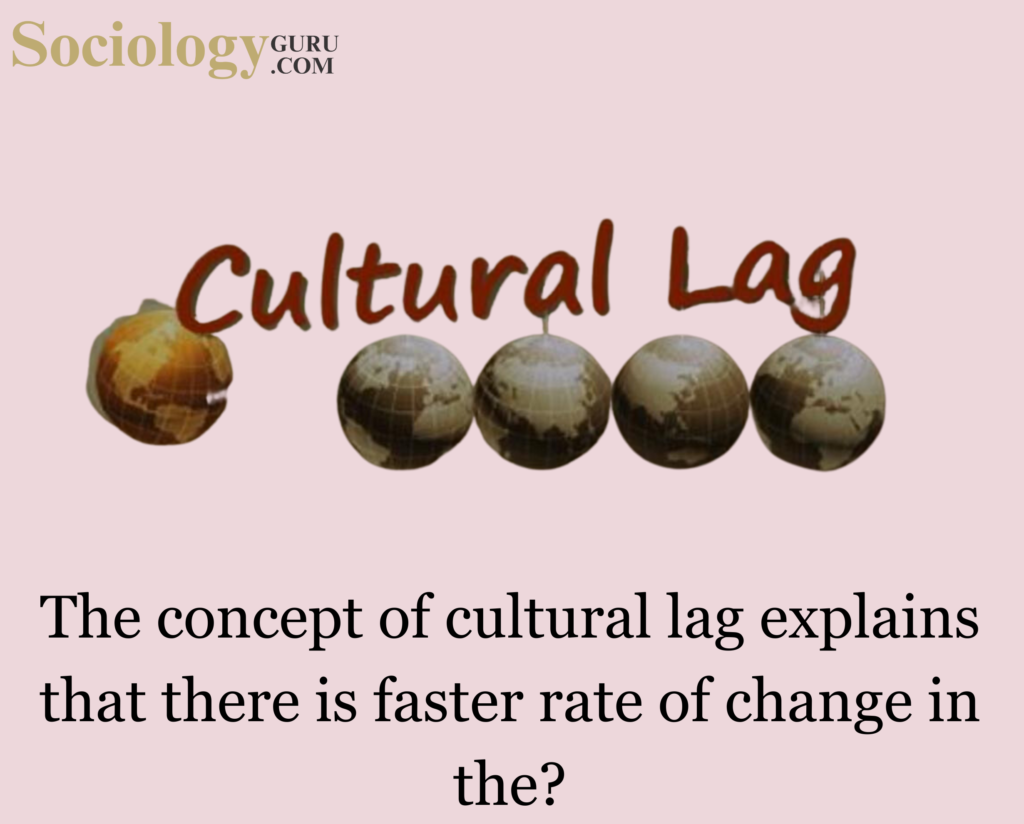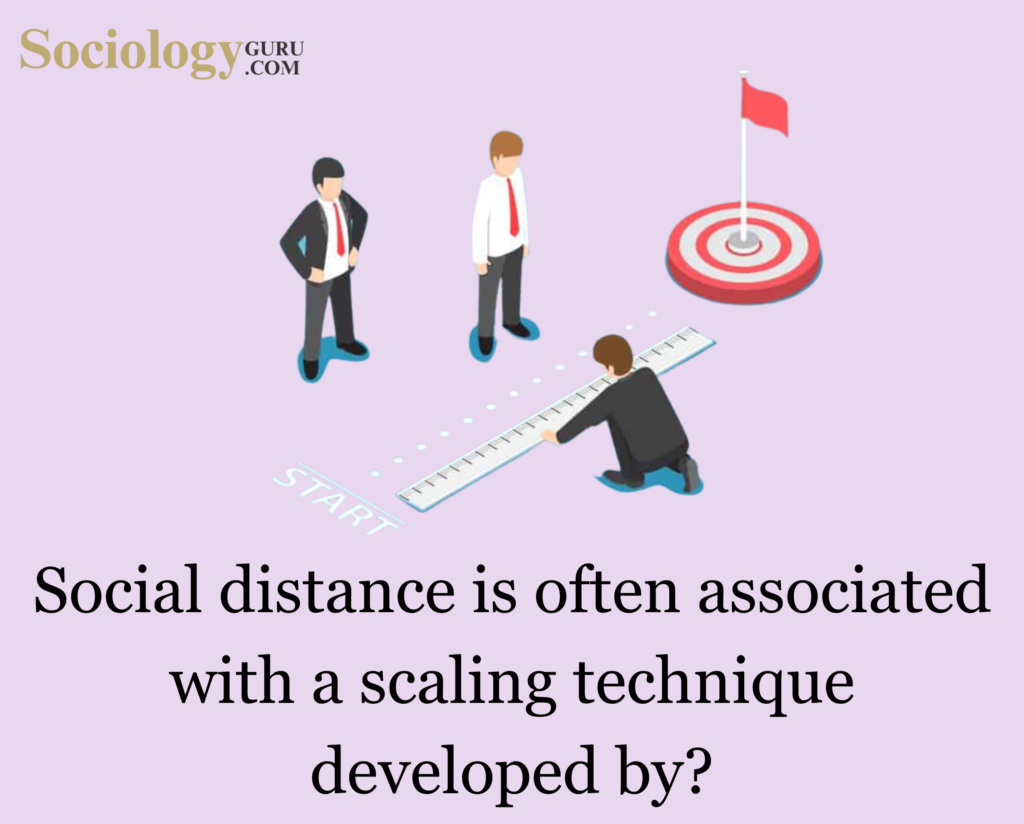Question: A basic distinction between culture and civilization is:
- Culture is what we have achieved and civilization is what we aspire to achieve.
- Culture is what comes out of intelligence and civilization is not.
- Culture is secondary and civilization is primary.
- Culture is what we are and civilization is what we have.
| Answer: (4)
Understanding the Concepts: Setting the Stage Firstly, let’s set the foundation by elucidating the core aspects of both culture and civilization. Culture is an intricate tapestry woven with threads of beliefs, customs, values, languages, and practices that individuals share within a community. It’s the essence that embodies the soul of a community, permeating every aspect of human life from rituals and ceremonies to daily activities, thus shaping individuals’ thoughts, behaviours, and interactions. On the other hand, civilization is a more structured and tangible entity. It’s the manifestation of human organization at its pinnacle, showcasing advancements in social, political, and technological realms. Civilization encompasses cities, governmental institutions, technologies, economy, and various other structural and systemic elements that signify an organized, complex society. Depth of Subjectivity vs. Architectural Objectivity Culture carries a profound subjectivity, as it’s internalized and lived by individuals. It encapsulates human expressions, arts, languages, and shared beliefs that traverse beyond materialistic boundaries. Civilization, conversely, stands as a towering structure, representing objective achievements such as technology, infrastructure, governance, and social organization. This differentiation is crucial, as it positions culture as the essence, the lived experience, while civilization stands as the physical embodiment of societal advancements. Evolutionary Trajectories: Organic vs. Intentional Culture evolves in an organic manner, adapting, and molding based on historical, environmental, and social influences. It’s a living entity, constantly in flux, receptive to changes, and adaptable to shifting paradigms. Civilization, however, marches on a more intentional path. Societal structures, technological advancements, and organized systems are meticulously constructed, embodying human intent and design in an explicit manner. Influence: Individual vs. Collective The reach and influence of culture predominantly percolate into individual behaviors, thinking patterns, and decision-making processes. It subtly yet profoundly influences individuals’ worldview, perceptions, and interactions. Civilization influences at a macro level, affecting collective behavior, societal norms, regulations, and overall societal trajectory. It lays down the broad avenues of social navigation, encompassing law, politics, and technological pathways. Transmission: Socialization vs. Multiple Modes Culture primarily disseminates through intricate processes of socialization, stories, languages, and shared experiences. It’s passed down through generations, imbibing individuals with a sense of identity and belonging. Civilization, on the contrary, employs multiple avenues of transmission, ranging from formal education, legislative mechanisms, to historical archives and documented advancements. Existential Domains: Specific vs. Generalized Culture flourishes in the realms of specificity, often being unique to particular groups, communities, or societies. It signifies a distinctive identity, nuanced with unique beliefs, practices, and customs. Civilization embodies a more generalized facet, representing a broad canvas of human advancement and organization, often encompassing a multitude of cultures within its wide embrace. Temporal Dynamics: Fluidity vs. Endurance Cultures, despite their historical roots, can exhibit considerable fluidity. They are susceptible to transformations, adaptations, and shifts influenced by various external factors, including interactions with other cultures, globalization, or significant societal changes. Civilizations, in their structural grandeur, display a resilient endurance. Their transformation is a gradual process, marked by sustained periods of stability and slow shifts. Closing Reflections In closing, discerning between culture and civilization involves an intricate exploration of human societies’ fabric and evolutionary paths. The MA CUET exam question nudges towards a profound understanding of these concepts, crucial for delving deep into humanities and societal studies. Understanding these distinctions not only enriches intellectual horizons but also enhances the nuanced appreciation of the multifaceted human societies that grace our planet. The answer option that encapsulates these essences most accurately is option (d): “Culture is what we are, and civilization is what we have,” which succinctly captures the essence of these multifaceted concepts in a comprehensive manner. |
Take a Quick Sociology Quiz to measure your Performance
Frequently Asked Questions:
1. Question: Define the term “ethnic movement” and provide an example from India.
Answer: An ethnic movement refers to a collective effort by a group sharing common cultural, linguistic, or religious traits, seeking to assert their identity and rights; an example from India is the Khalistan Movement in Punjab.
2. Question: Identify the main objectives behind the Gorkhaland ethnic movement.
Answer: The Gorkhaland ethnic movement primarily seeks to establish a separate state for India’s Nepali-speaking population in the Darjeeling region, advocating for linguistic and cultural recognition and political autonomy.
3. Question: What was the Operation Blue Star, and which ethnic movement was it related to?
Answer: Operation Blue Star was a military action in 1984, aiming to remove Sikh militants hiding in the Golden Temple in Amritsar; it is related to the Khalistan movement, which sought a separate Sikh country.
4. Question: Mention a critical factor that triggered the emergence of ethnic movements in India, as discussed by Dipankar Gupta.
Answer: Dipankar Gupta emphasized that ethnicity is fundamentally a political process, wherein caste and religion, the key components of identity formation, are politicized by leaders for vested interests.
5. Question: What were the primary reasons for the Assam Ethnicity conflicts involving Bodo tribals and Bengali Muslim settlers?
Answer: The Assam Ethnicity conflicts primarily stemmed from issues related to immigration, land rights, and resource allocation, leading to clashes, riots, and evolving relationships among indigenous communities to address challenges.
6. Question: Briefly describe the role of the Dravidian Movement in terms of caste and societal structure.
Answer: The Dravidian Movement, led notably by E.V. Ramasamy, aimed to establish an egalitarian society, focusing on anti-Brahmanism and advocating for equal rights for backward castes, while also introducing reforms like self-respect marriages.
7. Question: Name the prominent ethnic movements in North-East India and specify one common objective.
Answer: Prominent ethnic movements in North-East India include the Nagas’ and Mizos’ struggles; a common objective was to gain autonomy and recognition for their distinct tribal identities and cultural uniqueness.
8. Question: What is the key argument of Gail Omveldt regarding traditional Indian society and multiculturalism?
Answer: Gail Omveldt opposed romanticizing traditional Indian society, arguing that hierarchy has always dominated it and dismissing the notion that multiculturalism is an intrinsic feature of Indian society as a myth.
9. Question: Briefly explain the social hierarchy factor as a contributing element to ethnic movements as suggested by Olzak.
Answer: Olzak suggests that the construction of hierarchies among ethnic communities, which often leads to the suppression of one group by another, is a key factor that can instigate social and ethnic movements.
10. Question: Identify one consequence of the unequal economic development factor within the context of ethnic movements in India.
Answer: One consequence of unequal economic development is the marginalization and underdevelopment of certain groups, leading to feelings of alienation and sometimes initiating ethnic movements as these groups strive for equality and recognition.
To master these intricacies and fare well in the Sociology Syllabus, aspiring sociologists might benefit from guidance by the Best Sociology Teacher and participation in the Best Sociology Coaching. These avenues provide comprehensive assistance, ensuring a solid understanding of sociology’s diverse methodologies and techniques.
META TAGS:
Why Vikash Ranjan’s Classes for Sociology?
Proper guidance and assistance are required to learn the skill of interlinking current happenings with the conventional topics. VIKASH RANJAN SIR at SOCIOLOGY GURU guides students according to the Recent Trends, making him the Best Sociology Teacher for Sociology.
At Sociology Guru, the Best Sociology Coaching platform, we not only provide the best study material and applied classes for Sociology but also conduct regular assignments and class tests to assess candidates’ writing skills and understanding of the subject.
Choose The Best Sociology Teacher for your Preparation?
To master these intricacies and fare well in the Sociology Syllabus, aspiring sociologists might benefit from guidance by the Best Sociology Teacher and participation in the Best Sociology Coaching. These avenues provide comprehensive assistance, ensuring a solid understanding of sociology’s diverse methodologies and techniques. Sociology, Social theory, Best Sociology Teacher, Best Sociology Coaching, Sociology Syllabus.
Best Sociology Teacher, Sociology Syllabus, Sociology, Sociology Coaching, Best Sociology Coaching, Best Sociology Teacher, Sociology Course, Sociology Teacher, Sociology Foundation, Sociology Foundation Course, Sociology CUET, Sociology for IAS, Sociology for UPSC, Sociology for BPSC, Sociology for UGC NET, Sociology for JPSC,
Follow us :
KEYWORD: – culture and civilization, culture and civilization, Distinction Between Culture and Civilization, Distinction Between Culture and Civilization, Culture and Civilization Sociology, Culture and Civilization Sociology, Culture and Civilization CUET, Culture and Civilization CUET, MA CUET SOCIOLOGY, MA CUET SOCIOLOGY



